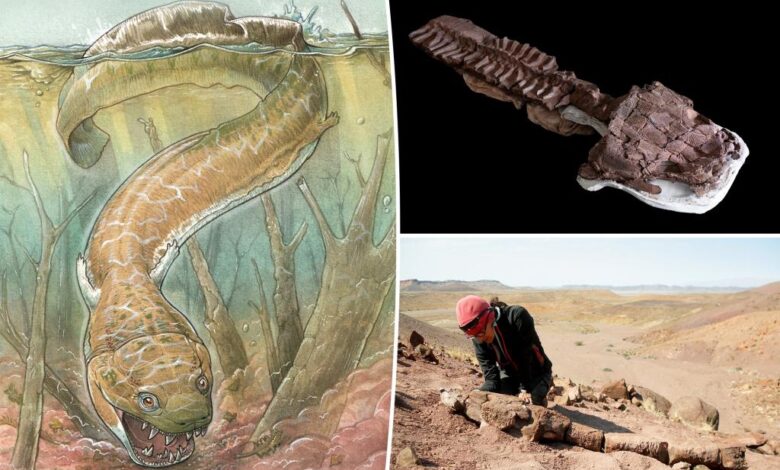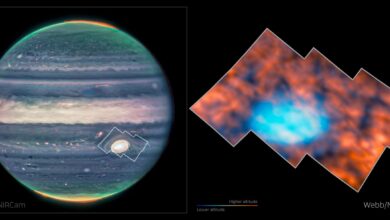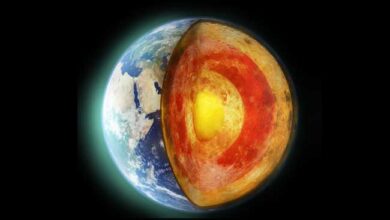Human-sized, fanged salamander cold provide evolutionary clues

[ad_1]
Fangs for the memories.
The tyrannosaurus rex wasn’t the first toothy predator on earth.
40 million years before dinosaurs became the world’s apex predators, there existed a human-sized salamander with four-inch fangs, according to an eye-opening study published in the journal “Nature.”
A fossilized skeleton of the amphibian was unearthed in Nambia by scientists from Argentina.
“It has these huge fangs, the whole front of the mouth is just giant teeth,” study co-author Jason Pardo, a postdoctorate at the Field Museum in Chicago, said in a statement regarding the aquatic creature.
Dubbed “Gaiasia jennyae” after the Gai-as Formation where it was found, this prehistoric predator lived 280 million years ago during the Permian period, when there was a single continent, Pangaea, the Washington Post reported.

The beast measured six to eight-feet long and likely prowled the “bottom of swamps and lakes,” where it was the apex predator, postulated Pardo.
This dentally-endowed animal would ambush smaller critters and dispatch them with its “interlocking large fangs” and unique two-foot-long skull.
“It’s got a big, flat, toilet seat-shaped head, which allows it to open its mouth and suck in prey,” said Pardo, who surmised that the big-headed bog-dweller relied on surprise rather than speed to dispatch its food.
He theorized that while the super salamander’s flat noggin was good for grabbing and vacuuming up its victims, it wouldn’t have been very “hydrodynamic.”

“Fast ambush predators like pike or gar tend to have long, narrow faces which can move more quickly through the water; that’s not what we see in Gaiasia,” Pardo said.
In this way, the creature is similar to the Chinese giant salamander, the world’s largest amphibian which also ambushes prey and sucks them up with its capacious maw.
Extreme dentistry isn’t this critter’s only unique attribute. Gaiasia is a straggler from the stem tetrapod, which eventually evolved into mammals, birds, reptiles and amphibians, also known as crown tetrapods.
“It’s really, really surprising that Gaiasia is so archaic,” said Pardo. “It was related to organisms that went extinct probably 40 million years prior.”
In addition, the salamander’s location — which at the time would’ve been parallel to the northernmost point of modern-day Antarctica — is unique in that it was situated far from its compatriots.
“Gaiasia occurred much further south than its close relatives who lived in what is now North America and Europe,” Anthony Romilio, a paleontologist at the University of Queensland in Australia who was not involved in the study, told the Washington Post.
He added that this cooler habitat suggests that “early tetrapods were more widespread and adaptable to different climates than previously thought.”
[ad_2]
Source link




